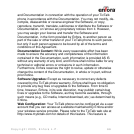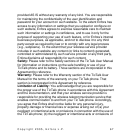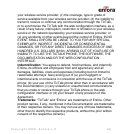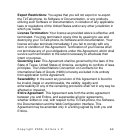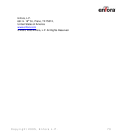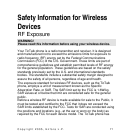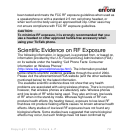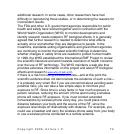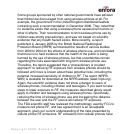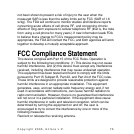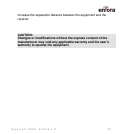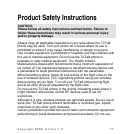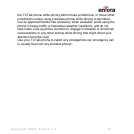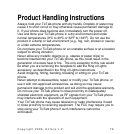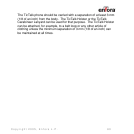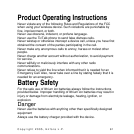
Some groups sponsored by other national governments have advised
that children be discouraged from using wireless phones at all. For
example, the government in the United Kingdom distributed leaflets
containing such a recommendation in December 2000. They noted that
no evidence exists that using a wireless phone causes brain tumors or
other ill effects. Their recommendation to limit wireless phone use by
children was strictly precautionary, and was not based on scientific
evidence that any health hazard exists. More recently, a report
published in January 2005 by the British National Radiological
Protection Board (NRPB) summarized the results of various studies
from 2000 to 2004 on the effects of wireless phone use, and concluded
that there is no hard evidence that the health of the public is being
harmed by the use of wireless phones, but that uncertainties remain
regarding the risks associated with long-term wireless phone use.
Therefore, the report suggested that a "precautionary or prudent
approach" to reducing RF exposure from wireless phones should be
followed until more is known about these potential risks, including the
potential increased sensitivity of children to RF. The report (NRPB-
W65) is available for download at the NRPB website (www.nrpb.org).
Again, the scientific evidence does not show a danger to users of
wireless phones, including children and teenagers. If you want to take
steps to lower exposure to RF, the measures described above would
apply to children and teenagers using wireless phones. Specifically,
reducing the time of wireless phone use and increasing the distance
between the user and the RF source will reduce RF exposure.
The FDA scientific staff has reviewed the methodology used by FCC to
measure cell phone RF, and has agreed that it is an acceptable
approach, given our current understanding of the risks presented by
cellular phone RF emissions. RF emissions from cellular phones have
Copyright 2005, Enfora L.P. 74



